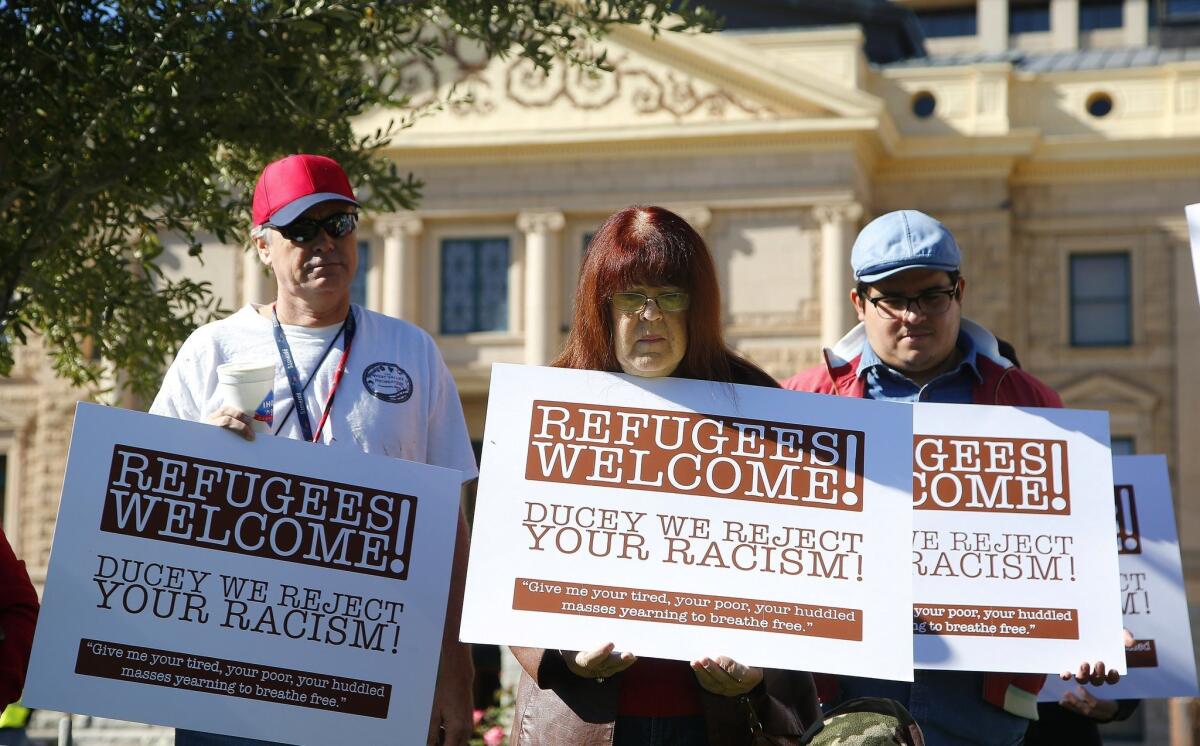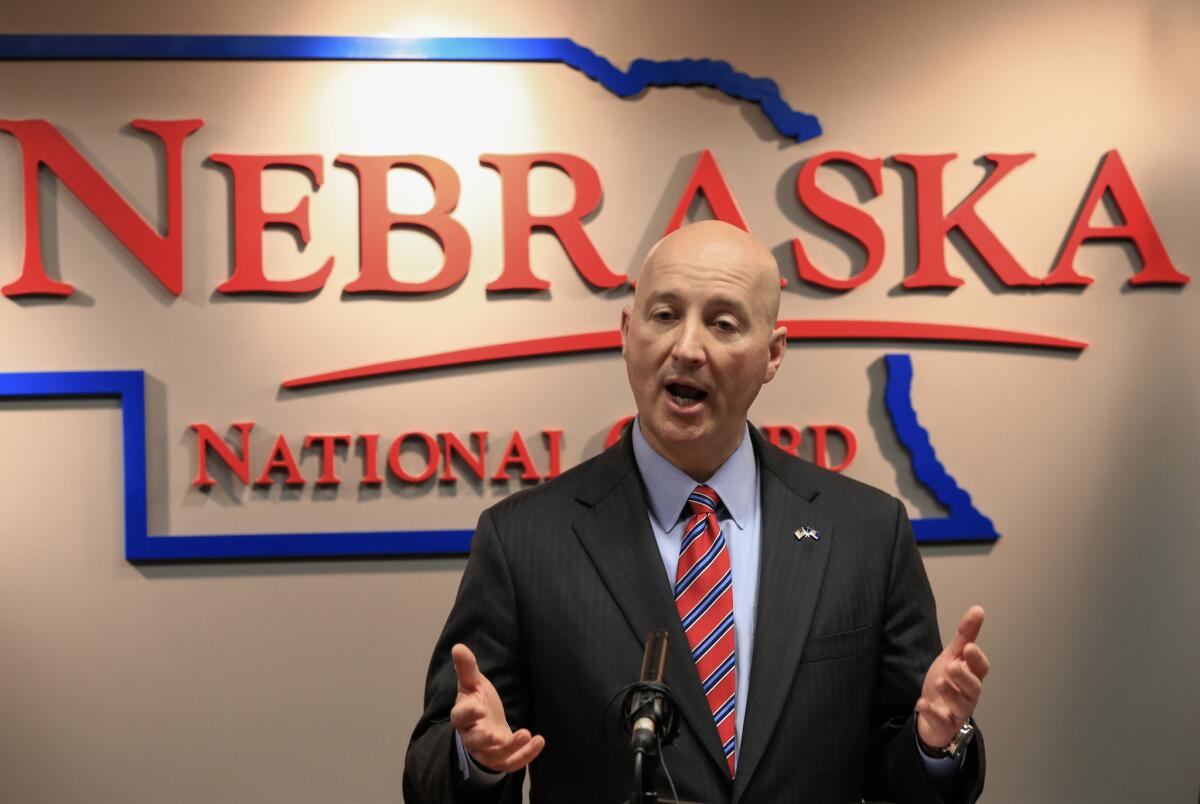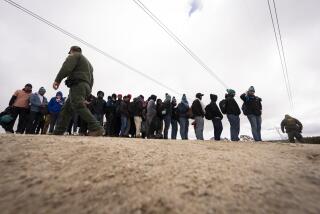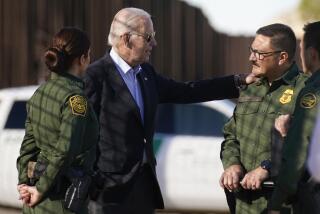How the U.S. screens Syrian refugees to vet out potential terrorists

Supporters for the welcoming of Syrian refugees rally at the Arizona Capitol in Phoenix on Tuesday. Arizona Gov. Doug Ducey has joined a growing number of governors calling for an immediate halt to the placement of any new refugees in the wake of terrorist attacks in Paris. The U.S. State Department says Arizona has received 153 Syrian refugees this year.
Speculation that one of the suicide bombers involved in the Paris terrorist attacks entered Europe as a political refugee has touched off a firestorm in the United States and focused attention on how the State Department chooses and screens refugees.
Citing security concerns, at least 31 governors have said they don’t want to take in any more Syrian refugees. Congressional Republicans have called for either a suspension of the Obama administration plan to allow 10,000 to enter the country or an end to the plan altogether.
According to the Obama administration, about 2,500 Syrian refugees have already been allowed to enter the United States. About half are women, usually heads of households, and about half are children. Just 2% of those admitted are single males of combat age.
The administration has fought back, insisting that its screening methods are designed to prevent terrorists from sneaking into the country under the cover of humanitarian programs. President Obama called the security checks draconian but necessary for the United States to fulfill its mission of helping refugees and for following its political values of being an open society.
How does the process begin?
The refugee intake programs begin with the United Nations High Commissioner for Refugees, the agency that conducts the first rough cut, sort of like the first-responders to the refugee crisis, spokesman Brian Hansford said from Washington.
The Syrian civil war, now in its fifth year, has spawned 4.3 million refugees most living in camps in Lebanon, Jordan and Turkey. As refugees cross the border they enter one of the camps where they are registered and receive food and medicine while being protected from the dangers of war, he said.
The ideal solution, Hansford said, is for the refugee to be allowed to go home, but that is not likely with the current state of the war. The refugee can also be integrated into the host country, also a problem because it places a special economic burden on relatively poor nations.
For a small number of the most vulnerable, such as torture victims, mothers who are heads of households and those with special medical needs, there is the possibility of resettlement in one of the 28 countries accepting Syrian refugees.
What does the U.S. screening process entail?
Since the 1970s, the United States has resettled more than 3 million refugees, many Vietnamese. The United States currently takes in 70,000 refugees annually from all over the world, but has proposed to increase that number to 85,000 this year. About 10,000 of the increase was earmarked for Syrian refugees, senior Obama administration officials said.
After the refugees go through the UNHCR intake, the more intense screening begins, according to John Sandweg, former acting general counsel to the Department of Homeland Security and former acting director of Immigration and Customs Enforcement. Homeland Security is among the entities heavily involved in the screening. Intelligence, the Department of Defense and other law enforcement agencies are also involved.
A refugee is subjected to biographical and biometric screening. The refugee’s written history is checked against databases; techniques including fingerprints and eye scans are also used, Sandweg said.

Nebraska Gov. Pete Ricketts sent a letter this week to refugee resettlement agencies in the state, urging them not to pursue resettlement of Syrian refugees.
What do critics say about this process?
Critics complain that checking records can be questionable when dealing with groups fleeing war and people who may not have documents.
Allowing a terrorist disguised as a refugee to enter is a possibility, Sandweg said. But, he added, “talk to any professional and they will probably say what keeps them up at night is the homegrown terrorist.”
In Paris, where 129 were killed in a combination of shootouts and bombings, some of those responsible were radicalized French or Belgian citizens.
“There is a notion that refugees are the source of the problem,” Sandweg said. “Recent events show the opposite. Individuals get radicalized at home and it is not the wolf slipping in in sheep’s clothing.”
The OBama administration said Syrians and Iraqis are often heavily documented because the often totalitarian governments they are fleeing require massive paperwork as a means of political control. If a document is missing, interrogators are trained to question why and to compare those answers with others response from refugees.
What else happens during the interrogation?
The interview is considered among the most important steps in the screening, and the United States uses trained interrogators from a variety of fields, including intelligence, to seek out possible plants, Sandweg said. Other refugees are an important part of the screening process because information is checked against each interview for inconsistencies, he said.
“One of requirements is for an in-person interview with trained professionals who are familiar with country conditions,” Sandweg said. “They are trained in forensic techniques. They interview individuals in person, their family members and go back to corroborate contradictory information. They use open sources and classified materials for the search.”
“A fair number of people are rejected,” he said.
After the interview, the refugee heads to the United States, where there are further interviews at the border. There is also another layer of domestic law enforcement involved, he said.
More to Read
Sign up for Essential California
The most important California stories and recommendations in your inbox every morning.
You may occasionally receive promotional content from the Los Angeles Times.











